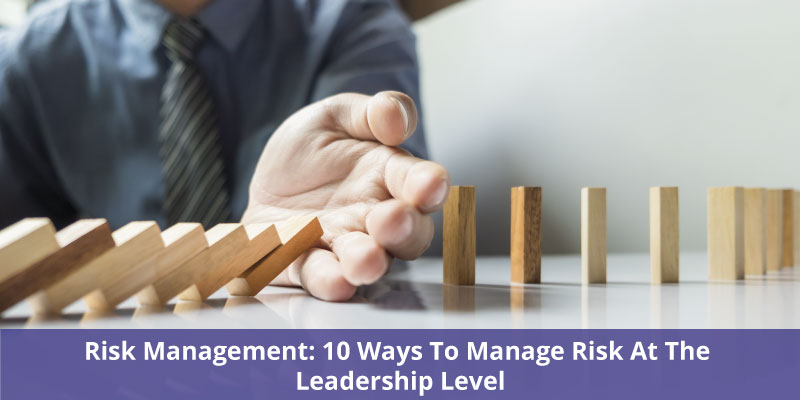Following the 2008 crisis, financial establishments have been spending billions of dollars on risk management. However, most of their amendments have been short-lived since they failed to change their fundamental company culture. According to
Weber Shandwick’s latest research, only one in every five personnel globally strongly admits that their business enterprise creates a positive culture, paving way for a lucid opportunity for improvement.
What is risk culture?
Risk culture is the same for every commercial enterprise. It is a culture that is constantly functional as it displays the shared values, objectives, and practices that embed risk into a company’s decision-making procedures and risk management into its operational strategies.
The fundamentals of risk culture
There may be 2 basic elements that nurture risk culture:
- Board and executive proprietorship – It is the obligation of the Board and Executive to outline their preferred Risk culture is required to establish and maintain the tone that they desire to permeate throughout the company. Not by simply documenting and communication, but tone must be successfully set on the top and modeled throughout central management and the operational workforce.
- Strong Risk and Administrative Frameworks – This consists of company values, code of conduct and ethical schemes, regulations and procedures, the risk administrative structure and tactics, incentive packages, and the risk management system.
Both of these encompass the perception systems and core values that steer behavior and aid day-to-day activities and decision-making throughout the company, especially associated strategic pursuits. Such attitudes, behaviors, and ideals are hardly ever tangible. However, all of these require attentive surveillance.
Importance of risk management in corporate culture
Most financial organizations apprehend the absolute need to acknowledge operational risk management (ORM). If business entities become vulnerable to certain sorts of risk, it is only right to construct a central risk-resistant culture to resist the worst consequences. By creating a full-scale risk-proof culture and embedding it into the company strategy, business model and practices, and strategies of organizations, it'll trickle down from the top and could make sure adherence and responsibility throughout the board and organizational stability. An effective risk management culture will generate a common organizational purpose, create a proactive technique to handle risks in addition to constant method improvement. Also, it is designed to build a shared understanding of risks, threats, and mitigate vulnerabilities from complicated operational practices. Furthermore, it paves the way to evolve and drive the preferred risk culture that aligns with the organization’s values.
The Three Lines of Defense
Most ORM schemes look for the understanding of the entire company about the following lines of defenses:
- In the primary line, organizational operations own and manage risk.
- Secondly, risk management and compliance supervise risk.
- And third, independent assurance conducts audits and analyses.
However, at a financial organization with an ordinary ORM program, that understanding is theoretical. So instead, someone is appointed to do that work.
An effective risk management scheme makes use of a structure that addresses all factors of ORM: culture, technique, administration, processes, and tools/technology. One or more of these are often common to many programs. However, the key to success depends upon the level the risk control culture penetrates the other four. The culture should be evident in the methodology and administration.
Embedding Risk Culture
- Vision - The primary initiator to successfully embed risk culture in any corporation is vision. You need to seek for the most senior levels to grow a preferred state for its risk culture, a transparent goal that the management can work towards.
- Assessment - Once the goal is understood, an evaluation of the current risk culture needs to be achieved. There are many approaches by which it can be achieved like surveys or assurance reviews. When you review the data points present in any commercial enterprise, it must be pretty direct for the primary line of defense to conduct a risk culture self-evaluation, which together with outcomes from second and third line assurance activities can offer beneficial snapshots via different To facilitate successful assessments, a definite framework in place is a must. At least, any assessment of risk control needs to encompass the following:
- Tone
- Level of Board and Executive Management proprietorship and Also upsurge of risk issues.
- Business possession of risk control.
- Decision-Making
- Calibration, and amalgamation of risk into strategic planning.
- Affirmation of key business decisions making risk into consideration and learning from failure.
- Utilization of risk thirst to notify the decision
- Risk Management Framework
- Efficacy of risk control and administrative procedures.
- Standard and availability of risk subject matter expert (SME) talent and resources.
The prime factor is for Executive Management to acknowledge these assessments and broaden actions that ought to shape the following evaluation process.
Conclusion
The goal isn't to make risk culture assessments a process that occurs annually and then disappears. Instead, it must be a permanent system where management seeks to keep themselves to account through assessing and enforcing action as they proceed towards their preferred state, enhancing and refining iteratively. Corporations need to be continuously analyzing their risk culture and re-analyzing targeted goals to permit them to proactively deal with downstream challenges.



